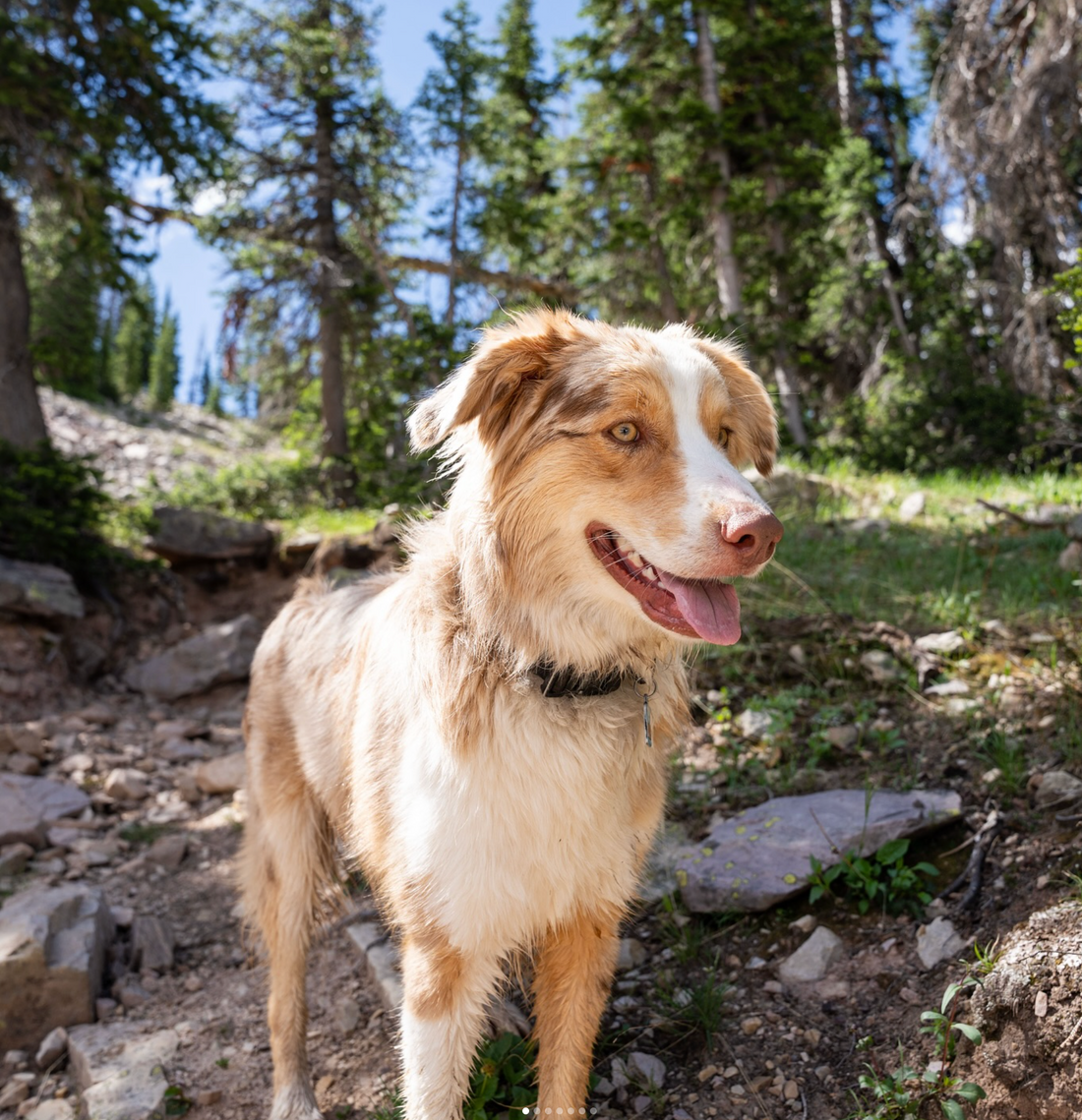
5 Tips for Seasonal Allergies in Dogs
Share
Did you know that dogs can suffer from seasonal allergies just like people? As the seasons change, pollen, mold, and other allergens fill the air, causing many dogs to experience symptoms like itchy skin, watery eyes, sneezing, and more.
At Good Boy Billie, we believe in educating dog owners so they can help keep their pups happy and healthy all year long. When it comes to seasonal allergies, a little knowledge and a few simple habits can make a big difference in your dog’s comfort and well-being.
In this post, we’re sharing five easy, effective tips to help you manage your dog’s seasonal allergies and reduce their exposure to common allergens. Let’s get started.
Tip #1: Wipe Your Dog Down After Walks
After time outside, use pet-safe wipes or a damp cloth to clean paws, nose, legs, and belly.
Why it matters:
Pollen and other allergens stick to your dog’s fur and skin like Velcro! Giving your pup a quick wipe-down after walks can help remove allergens before they get tracked through your home or absorbed into your dog’s skin. Focus on the paws, which can trap a lot of debris, as well as exposed areas like the belly and nose.

Tip #2: Give Regular Baths During Peak Allergy Season
Bathe every 1-2 weeks during peak allergy season. Use a gentle, hypoallergenic shampoo to relieve irritation.
Why it matters:
Frequent baths can wash away allergens that build up on your dog’s coat and skin. Choose a gentle, soothing shampoo formulated for sensitive skin to avoid further irritation. Bathing too often with harsh shampoos can dry out the skin, so stick with a pet-friendly formula designed for allergy relief.
Product recommendations:
We recommend using gentle, pet-safe products like Earthbath Fragrance-Free Oatmeal & Aloe Shampoo and Conditioner or DermAllay Oatmeal Shampoo and Conditioner. Both are formulated to soothe sensitive skin and help wash away allergens. If your dog is dealing with significant allergies or itchy skin, DermAllay is often the better choice for providing targeted relief and reducing irritation.

Tip #3: Vacuum Often
Vacuum often, especially carpets, upholstery, and common dog hangout spots. Use a vacuum with a HEPA filter to trap allergens and dander.
Why it matters:
Even if you’re diligent about wiping your pup down, allergens can still make their way indoors on shoes, clothing, and air currents. Vacuuming regularly—especially where your dog likes to nap—helps reduce the amount of allergens circulating in your home. A vacuum with a HEPA filter is particularly effective at trapping fine particles like pollen and pet dander.

Tip #4: Use an Air Purifier
Use a HEPA air purifier. If your dog suffers from allergies, a HEPA filter can dramatically reduce the number of allergens in the air.
Why it matters:
Airborne allergens can cause respiratory symptoms and contribute to skin irritation in sensitive dogs. A HEPA air purifier can remove allergens from the air, creating a cleaner environment for your pup (and you!). This is especially helpful if you live in an area with high pollen counts or poor air quality.
Why a HEPA filter matters:
High-Efficiency Particulate Air (HEPA) filters are designed to capture extremely small particles—up to 99.97% of airborne particles as small as 0.3 microns. This includes common allergens like pollen, mold spores, pet dander, and even some bacteria. Using a HEPA air purifier in your home can significantly reduce the amount of airborne allergens your dog is exposed to, which can help ease both skin-related and respiratory allergy symptoms. HEPA filters are especially helpful in spaces where your dog spends the most time, such as bedrooms or living rooms. By improving indoor air quality, you're creating a cleaner, healthier environment for your pup—and for your whole family.

Tip #5: Limit Outdoor Time on High Pollen Days
Walk your pup in the early morning or late evening, when pollen count is lower. Check local pollen forecasts.
Why it matters:
Pollen counts are usually highest during mid-morning and early afternoon. By planning your walks for times when pollen is lower, you can help reduce your dog’s exposure. Many weather apps and websites provide local pollen forecasts, so you can check before heading out. On days with very high pollen counts, consider opting for indoor playtime instead.

Talk to Your Vet if Symptoms Continue or Worsen!
If your pup continues to show symptoms—like excessive itching, red eyes, ear infections, or respiratory issues—it’s time to consult your veterinarian. They can help diagnose the issue and may recommend allergy testing, medications, or other treatments to bring your dog relief.
Final Thoughts
Seasonal allergies aren’t just a human problem—dogs can experience them too. From itchy skin to sneezing and watery eyes, these symptoms can affect your dog’s comfort and quality of life. But with a few simple steps, you can help minimize their exposure to allergens and keep them feeling their best throughout the season.
Remember, if your dog’s symptoms persist or worsen, it’s important to consult your veterinarian for guidance and possible treatment options.
At Good Boy Billie, we’re here to help you stay informed and empowered as a dog owner. Be sure to explore the Good Boy Billie shop for products designed to celebrate the special bond between you and your pup.
Your dog’s health and happiness always come first—and we’re here to support you every step of the way.
